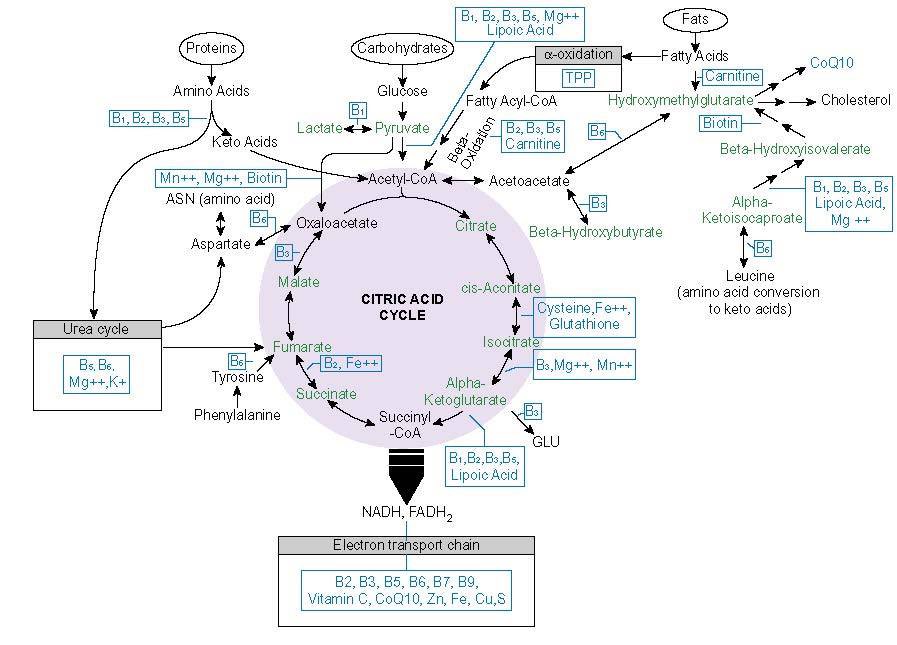Niacin may help prevent migraines or tension-type headaches when taken daily based on a review of nine articles about niacin use and migraines or tension-type headaches. It may also help end a migraine that is occurring with the cooling effect that follows the skin-reddening niacin flush.
- The treatment of migraines and tension-type headaches with intravenous and oral niacin (nicotinic acid): systematic review of the literature. (1)
“Chronic tension-type headaches are also associated with cerebrospinal pressure or intracranial venous pressure (or both) [26]. In fact, tension-type headaches are more similar to migraine headaches than they are dissimilar, in that they seem to progress into migraine headaches due to an escalating pathophysiological process [27].” (1)
Niacin may also help reduce a migraine that is occurring, with a 500 mg dose taken to cause the niacin flush.
Regarding one of the articles reviewed: “In this [self] report, Hall describes the use of niacin for his migraine headaches remarking that the migraines resolved when intense flushing occurred.” (1)
The vasodilation in the skin that causes the warm feeling and reddening of the skin is followed by a vasoconstriction and cooling effect on the body and brain. Older research confirmed vasoconstriction in the brain occurs as well as in the peripheral blood vessels, however current research is needed. (1)
From the Discussion section (1) : “When taken intravenously or orally, niacin causes cutaneous flushing that might abort the acute symptoms of migraine by vasodilating the intracranial vessels, thus preventing the subsequent vasoconstriction of the extracranial vessels.
There is evidence that niacin is an effective peripheral vasodilator, but its ability to influence central mechanisms (i.e., cerebral blood flow and cranial hemodynamics) involved in migraine headaches have not been well studied. Niacin causes peripheral vasodilation and cutaneous flushing by inducing the production of prostaglandin D2 (PGD2) in the skin, leading to a marked increase of its metabolite, 9α, 11β-PGF2, in the plasma [22].
When niacin is administered orally in amounts of 500 mg or topically via a 6-inch patch of 10-1 M aqueous methylnicotinate on the forearm, PGD2 is markedly released in the skin and its metabolite appears in high amounts in the plasma [22, 23]. It is not known if PGD2 causes vasodilation of the intracranial arteries, but niacin’s ability to abort acute migraine headaches suggests that this might be what is occurring.
Old reports cited by Bicknell and Prescott [24], demonstrate that niacin does indeed cause vasodilation of the cerebral and spinal vessels, and that intravenous administration increases the rate of intracranial blood flow in human beings for 20–60 minutes without any significant change in blood pressure. Unfortunately, there have not been more recent reports examining the effects that niacin has upon cerebral blood flow in human subjects.” (1)
Niacin (B3) is needed for Mitochondrial function…
…so are riboflavin (B2), other B vitamins; many trace minerals including magnesium; amino acid derived creatine and cysteine; and the internally made antioxidants CoQ10, glutathione and alpha-lipoic acid.
Niacin helps mitochondria function to burn glucose for energy use or to release as heat (such as in brown fat). Riboflavin and coenzyme Q10 and other nutrients are also used by the mitochondria. (1)
“A deficit of mitochondrial energy metabolism may play a role in the pathogenesis of migraine. Since niacin improves mitochondrial energy metabolism by increasing substrate availability to complex I, it might also be an effective agent for migraine prevention.” (1)
Citric Acid Cycle – used for aerobic glycolysis of glucose by the many many Mitochondria within all of our cells.

Nutrients include: B1 (thiamin), B2 (riboflavin), B3 (niacin), B5 (pantothenic acid), B6 (pyridoxine), B7 (biotin), B9 (folate), Mg++ (magnesium), Mn++ (manganese), K+ (potassium), zinc, iron, copper, sulfate, CoQ10, carnitine, cysteine, glutathione, Lipoic acid.
B vitamins are very important and we need them in balance because they work as a team. Niacin might not help as much if there is significant lack of the other B vitamins or some of the minerals, amino acids or antioxidants needed for the Citric Acid Cycle to function. The nutrients mentioned as cofactors for the chemical reactions in the above graphic include:
- B vitamins: B1 (thiamin) (3) , B2 (riboflavin) (4), B3 (niacin) (8, 10), B5 (pantothenic acid) (5), B6 (pyridoxine) (6, 7), B7 (biotin), B9 (folate) (9),
- Minerals (17): Mg++ (magnesium) (11, 12, 13), Mn++ (manganese), K+ (potassium) (13), zinc (14, 15), iron (16), copper, sulfate,
- Amino acids: carnitine (derived from lysine), cysteine,
- Antioxidants: CoQ10, glutathione, alpha-Lipoic acid (ALA).
Disclaimer: Opinions are my own and the information is provided for educational purposes within the guidelines of fair use. While I am a Registered Dietitian this information is not intended to provide individual health guidance. Please see a health professional for individual health care purposes.
Reference List
- Prousky, J., Seely, D. The treatment of migraines and tension-type headaches with intravenous and oral niacin (nicotinic acid): systematic review of the literature. Nutr J4, 3 (2005). https://doi.org/10.1186/1475-2891-4-3 https://nutritionj.biomedcentral.com/articles/10.1186/1475-2891-4-3
- Dmitry Kats, PhD, @NiacinisHealth Citric Acid Cycle graphic
- Thiamin: people with anorexia or alcoholism are more at risk for vitamin B1 deficiency. Aug 21, 2013 https://transcendingsquare.com/2013/08/21/thiamin/
- Riboflavin – Vitamin B2, May 23, 2018, https://transcendingsquare.com/2018/05/23/riboflavin-vitamin-b2/
- Pantothenic Acid – vitamin B5, May 24, 2018 https://transcendingsquare.com/2018/05/24/pantothenic-acid-vitamin-b5/
- Vitamin B6, https://transcendingsquare.com/2013/08/21/vitamin-b6-2/
- Pyroluria, anxiety and deficiency of B6 and zinc, most recent update, 4/9/2017 https://transcendingsquare.com/2014/09/22/pyroluria-anxiety-and-deficiency-of-b6-and-zinc/
- Niacin, & early treatment in general for SARS-CoV-2 is sensible, reduces hospitalization and mortality rate. https://transcendingsquare.com/2021/01/22/niacin-early-treatment-in-general-for-sars-cov-2-is-sensible-reduces-hospitalization-and-mortality-rate/
- Folate is essential and Folic Acid is commonly available. Aug 21, 2013, https://transcendingsquare.com/2013/08/21/folate-and-folic-acid-2/
- Niacin, Aug 21, 2013, https://transcendingsquare.com/2013/08/21/niacin/
- To have optimal Magnesium needs Protein and Phospholipids too. July 20, 2018, https://transcendingsquare.com/2018/07/20/to-have-optimal-magnesium-needs-protein-and-phospholipids-too/
- Magnesium – essential for eighty percent of our body’s chemistry. July 1, 2019, https://transcendingsquare.com/2019/07/01/magnesium-essential-for-eighty-percent-of-our-bodys-chemistry/
- Electrolytes are essential, magnesium helps protect brain cells. Feb 10, 2011, https://transcendingsquare.com/2011/02/10/electrolytes-r-us-magnesium-saves-brain-cells/
- Zinc, https://jenniferdepew.com/zinc
- Zinc and the immune system, https://www.peace-is-happy.org/post/zinc-and-the-immune-system
- Iron and anemia of chronic inflammation. https://www.peace-is-happy.org/post/iron-and-anemia-of-chronic-inflammation
- Trace Minerals – It’s Teamwork. https://www.peace-is-happy.org/post/trace-minerals-it-s-teamwork
